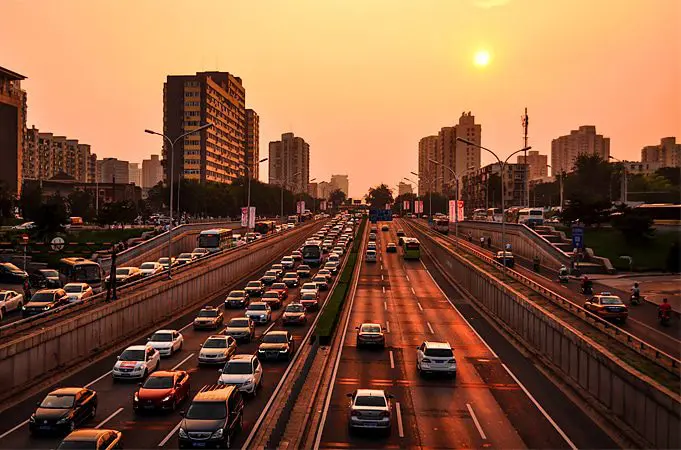words Al Woods

Do you live in a big city? Or do you commute to one? It can be extremely stressful to drive in heavy traffic. So, we’ve put together some tips on how to stay safe while navigating crowded roadways.
Keep a Safe Distance
It is always important to keep a safe distance from the car ahead of you, but in heavy traffic, it’s even more critical. If the vehicle in front of you suddenly stops, you need to have time to brake to avoid an accident. Safe following distance is usually considered to be at least 3 seconds behind the car ahead of you.
Maintaining the correct distance can be complicated, as other cars may cut in front of you when you leave an appropriate space. If this happens, back off until you’re at a safe distance again. In rear-end crashes, the driver who’s following is almost always considered to be at fault.
In case of a rear end accident, the driver who’s following is almost always considered to be at fault. Even if the driver in front stops suddenly, the responsibility falls on the driver behind to maintain a safe enough distance to prevent a collision.
Keep a close eye on the cars ahead of you. When they start braking, take your foot off the accelerator and gradually begin braking. This will prevent you from braking too fast, which can increase the risk of being hit by the vehicle behind you.
Use Directional Indicators
It’s always essential to use your turn signals adequately, but in dense traffic, it becomes even more of a safety issue. Signal well ahead of a lane change, so other drivers have time to notice and adjust. The general recommendation is 100ft (30m) or five seconds before you make a turn or change lanes; local laws may vary slightly.
Remove Distractions

Once again, this is always good advice while driving. It’s never a good idea to text or to handle electronic devices while driving. Food, makeup, and other distractions should also be avoided while driving.
In the case of heavy traffic, you may want to reduce distractions even further. Turn your radio down or off, and if necessary, ask passengers not to talk with you so you can concentrate fully on the task of driving safely.
Stay Calm
Your emotional state has an impact on your driving ability. If you start getting too nervous to drive safely, you may need to pull off the road or get off at the next exit to rest. Take a few minutes to regain your composure before getting back on the road.
Plan Ahead
Planning well can help you avoid getting into a traffic jam. You can do this by avoiding peak hours and studying alternate routes. Keeping your car insurance up to date can also bring peace of mind when facing heavy traffic.
Avoid Peak Hours
When possible, choose to drive at times when the roads are less busy. While these times may vary from one place to another, typical peak hours are 8:00-9:00 am and 5:00-6:00 pm. Sometimes leaving just 15 minutes earlier or later can make a big difference.
Find Alternate Routes

Sometimes even when you plan well, you can run into congested roadways. Be prepared to find alternate routes to use. You can do this by studying side roads ahead of time or by having a passenger check other possibilities on GPS while you drive.
Keep Your Car Insurance Up to Date
While car insurance may not help you avoid an accident, it can protect you after an accident occurs. Auto insurance is critical in large cities like Toronto due to the heavy traffic commuters experience daily. Keep your payments up to date, and you’ll feel safer knowing you’re covered in case an accident does happen.
Conclusion
Crowded roadways are inevitable for many drivers, but taking wise action can get you safely to your destination. If possible, avoid peak driving times. If you do find yourself in heavy traffic, keep a safe distance, use your turn signals, and remove distractions.
It’s also essential to maintain your emotional stability while driving in heavy traffic. Keep your presence of mind and stay calm. Take a break from driving if necessary. Keeping your car insurance up to date can also help you stay calm when driving on crowded roadways.




